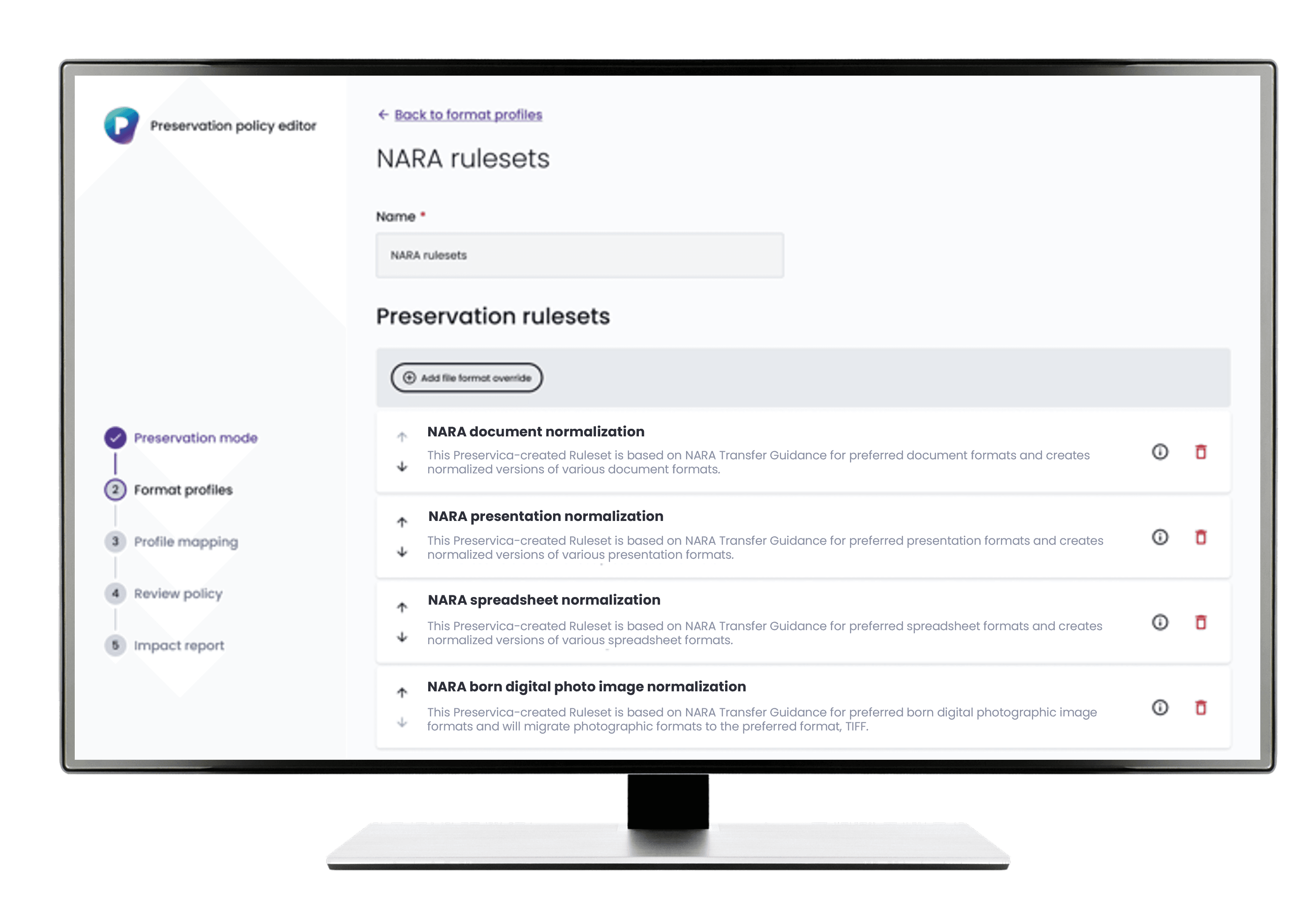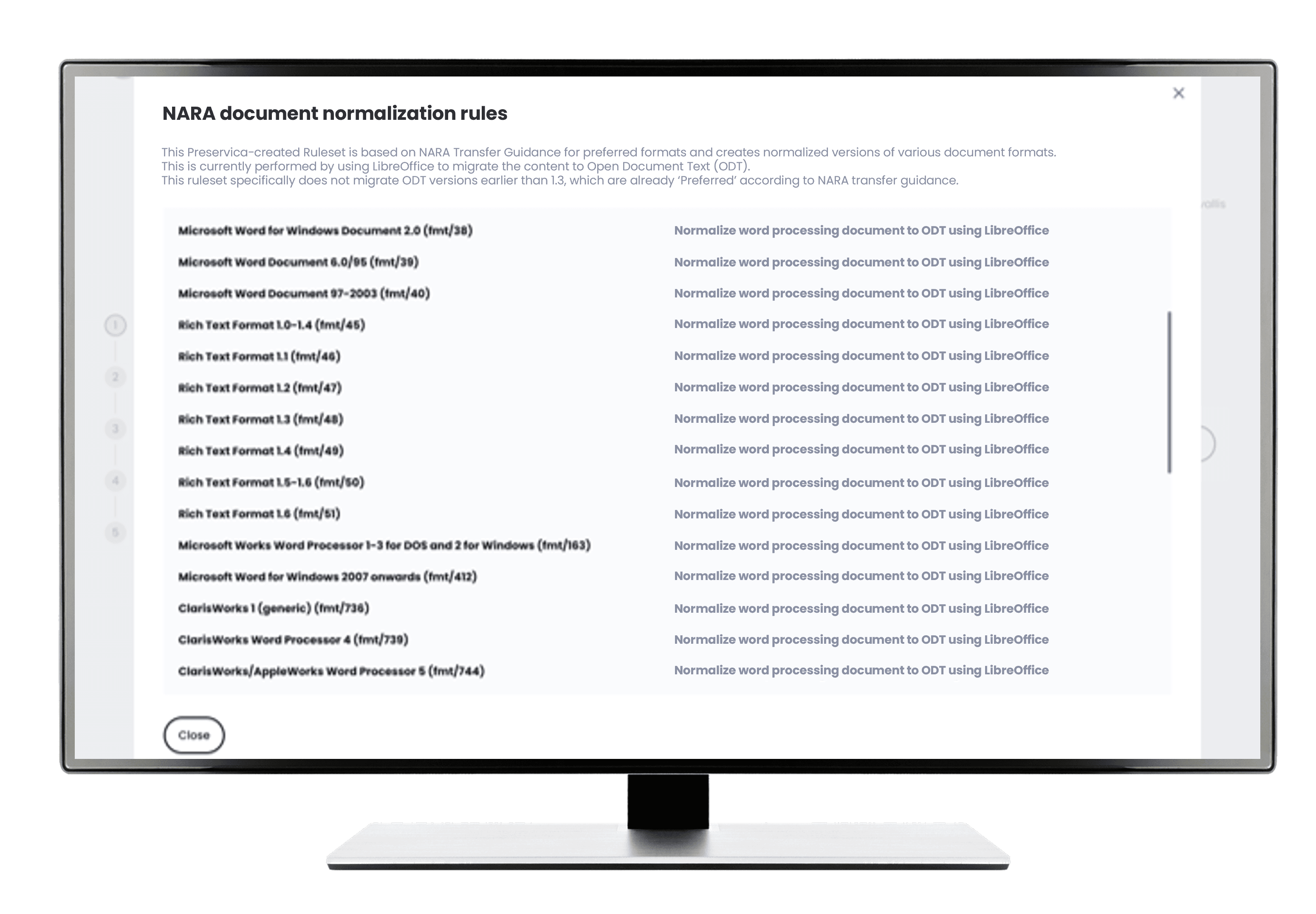Staying Ahead of the Curve: Keeping up with evolving Digital Preservation tools and recommendations
 David Clipsham
•
October 29, 2024
David Clipsham
•
October 29, 2024

The National Archives (NARA) recently released a major update to its Digital Preservation Framework, an open resource and data set on GitHub that offers guidance and risk assessments for digital file formats. This update is an exciting development for the archival community, highlighting the shifting nature of Digital Preservation as digital formats become unsupported or obsolete, preservation action recommendations change and tools for identifying and migrating file formats get updated.
The latest update covers 729 file formats, more than double the 358 formats assessed when the original risk matrix was first made available on GitHub in 2019.
Further, the latest update streamlines the risk criteria into a clear set of groupings such as ‘disclosure’, ‘transparency’, and ‘self-documentation’, as well as revising the questions asked to assess risk.
This demonstrates that our collective understanding of file format risk evolves over time and therefore requires continuous analysis and can result in changes to established practice.
Preservica has long recognized that Digital Preservation is an evolving challenge - and our file format analyst team, including myself, actively participates in the global conversation, sharing expertise and experience with other organizations to help shape these best practices.
Tackling the Challenge of Large-Scale Digital Preservation
NARA's update offers invaluable insights into managing digital file formats, but the real challenge lies in applying these and other digital preservation community-recommended updates at scale.
How can you ensure that changes are seamlessly implemented across your archive containing thousands or even millions of digital assets - and that this process continues efficiently over time?
It's similar to modern antivirus and security software—who has the time, resources or expertise to manually track and update security software these days? It's something that needs to happen automatically. Without it, you are putting your organization at risk.
It is the same for Digital Preservation except here the risk is that your valuable and critical digital assets will not be instantly readable when needed for FOI, Legal, Compliance, Brand, Cultural or Knowledge reuse needs - with potential financial and reputational consequences.

Intelligent and Automated Digital Preservation
For these reasons and more, we’ve integrated intelligence and automated processes into our Active Digital Preservation platform. Automated Digital Preservation is a core component of our platform, ensuring that records remain accessible and actionable for decades without manual intervention, regardless of the original application. This automation streamlines workflows, boosts productivity and scales effortlessly to support archivist teams of all sizes. Combined with ongoing intelligence and monitoring, our Active Digital Preservation approach not only preserves digital records but also continuously adapts to technological advancements, safeguarding their long-term integrity and usability.
As outlined in our Automated File Format Preservation White Paper, managing Digital Preservation manually simply isn't sustainable when dealing with thousands of assets and evolving digital preservation recommendations and tool updates. Archives need to leverage intelligent and automated technology to maintain the integrity and accessibility of their digital archive over time. It is also where flexible, policy-driven solutions come into play.
Flexible, Policy-Driven Digital Preservation
One of the other benefits of Preservica’s automated approach is flexibility and control. The solution allows you to set and maintain a Preservation Policy, whether this is to align with community-recommended preservation actions, those outlined by NARA or a customized approach tailored to your organization’s needs. Once set your policy is automatically applied on an ongoing basis to ensure the optimum long-term accessibility of your digital assets.
The flexibility also means you can update your Policy at any point and the changes will be automatically reflected in your archive. As Digital Preservation recommendations progress, this intelligent and dynamic “Zero-click” preservation approach ensures that your archive automatically remains up-to-date, relevant and aligned with the latest best practices.

Embedded Digital Preservation
Intelligently automating Digital Preservation also enables it to be seamlessly embedded into other applications - like Microsoft 365 for example - to make the archiving, preservation and retrieval of always-readable content and records part of the everyday workflow and user experience. Embedded solutions, like our own Preserve365, allow users to effortlessly archive, preserve and retrieve digital records without leaving the familiar applications they use daily. This integration ensures that Digital Preservation becomes a natural part of the workflow, enhancing compliance and efficiency while safeguarding valuable content for the long term.
Stay Ahead of the Curve
The National Archives update to their Digital Preservation Framework is a reminder that Digital Preservation is a dynamic, ongoing process.
As we embrace new Digital Preservation tools and methodologies and the volume, diversity and complexity of digital assets continue to grow, it's clear that intelligent and automated digital preservation is no longer a luxury—it's a necessity.
With file formats and Digital Preservation tools continually changing and new risks and challenges emerging, archives must have scalable, policy-driven solutions in place to ensure their digital assets endure.
After all, this is the core purpose of Digital Preservation: to ensure the ongoing integrity, readability and trustworthiness of digital assets over decades or forever.
Learn more about automated file format preservation and how it can help you align your archive with the latest standards, download our white paper or watch the Active Digital Preservation video for more insights.




